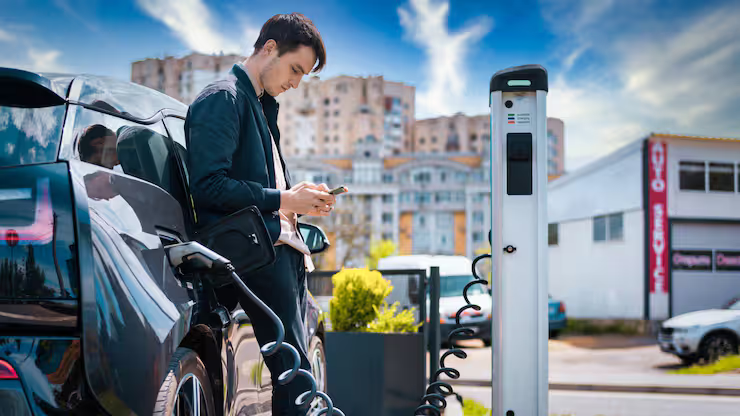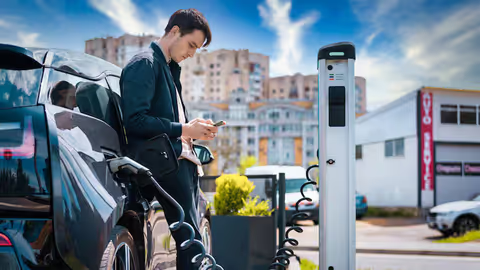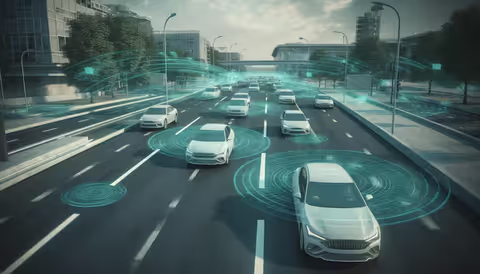
Wireless EV Charging Guide Explore Basics, Facts, and Key Insights
Wireless electric vehicle charging is an emerging technology designed to simplify energy transfer for modern mobility. It uses electromagnetic fields to move power from a ground-based charging pad to a receiver installed underneath an electric vehicle. This concept exists to enhance convenience, reduce physical cable handling, and support automated mobility systems where vehicles align over charging pads without manual interaction.
This technology has roots in inductive power transfer, a method used for decades in consumer electronics. As electric transportation evolves, the same principle is scaled up to support larger battery capacities. Wireless charging aims to create more seamless energy access in homes, workplaces, and public environments while supporting advanced transport systems such as connected cars and autonomous fleets.

A major goal behind the development of wireless EV charging is to address practical barriers in plug-in charging, improve user experience, and boost adoption of electric mobility. With improvements in charging efficiency, alignment detection, and energy transfer coils, the ecosystem is rapidly becoming more adaptable for daily use.
Importance
Wireless EV charging matters today because electric mobility is expanding globally and users expect easier, more intuitive charging methods. The shift toward clean transportation has created demand for technologies that reduce manual involvement and support continuous charging in diverse environments.
Wireless charging impacts:
-
EV owners who want convenient and accessible charging
-
Fleet operators using connected or automated vehicles
-
Urban planners who aim to integrate energy infrastructures within smart city designs
-
Manufacturers developing next-generation electric mobility solutions
It solves several challenges:
-
Reduces physical cable wear and maintenance
-
Provides charging in locations where cables may not be practical
-
Enables charging for autonomous vehicles that cannot plug themselves in
-
Supports dynamic charging lanes, helping extend driving range while the vehicle moves
These factors make wireless EV charging an essential element in long-term mobility planning and in the development of high-performance electric transportation ecosystems.
Recent Updates
Recent developments show rapid progress in wireless EV charging, efficiency improvements, and early commercial deployments.
Key highlights from the past year include:
-
January 2025: Several automotive companies expanded testing of dynamic wireless charging roads, allowing EVs to gain energy while driving.
-
March 2025: New research published by mobility institutes reported higher efficiency levels, reaching around 90–95% under optimal alignment conditions, narrowing the gap with traditional plug-in systems.
-
Mid-2024 to late-2024: Municipal pilot projects in Europe and Asia demonstrated wireless charging in taxi stands, reducing idle emissions and enabling smoother operation for electric taxis.
-
2024–2025: Advancements in vehicle-to-infrastructure communication enabled improved alignment detection, reducing energy loss and supporting standardized charging pads.
-
2025: Industry collaborations increased focus on interoperability standards so that different EV models can use the same charging pads.
These updates reflect a growing trend toward integrating wireless systems into public and private transportation environments, aligning with broader goals for smart infrastructure and sustainable mobility.
Laws or Policies
Government programs and regulatory frameworks influence how wireless EV charging evolves across different markets. Many regions are working on standards to ensure compatibility and safe operation.
Common regulatory factors include:
-
Electrical safety regulations ensuring proper electromagnetic field levels and safe installation
-
Infrastructure standards defining pad dimensions, alignment protocols, and communication interfaces
-
Energy efficiency guidelines that require charging systems to meet minimum performance thresholds
-
Smart mobility plans that include wireless charging as part of long-term transportation modernization
-
Environmental regulations encouraging reduced carbon emissions through convenient electric mobility access
In several countries, wireless EV charging is also included in broader smart city initiatives, allowing local authorities to test public charging pads integrated into roads, parking zones, and transport hubs.
Tools and Resources
A variety of tools and informational resources can help users understand and plan wireless EV charging.
Helpful Tools & Platforms
-
EV Battery Range Estimators – Online calculators that help predict how charging levels affect driving range.
-
Charging Efficiency Trackers – Tools that estimate power transfer efficiency between EV and charging pads.
-
EV Route Planning Apps – Platforms that map charging points and predict energy usage based on terrain and speed.
-
Wireless Charging Compatibility Guides – Digital references listing EV models that support inductive charging.
-
Smart Mobility Dashboards – Online dashboards showing infrastructure expansion, technology updates, and regional initiatives.
Example Table: Wireless EV Charging Levels & Typical Power Transfer
| Charging Level | Approx. Power Output | Common Use Case |
|---|---|---|
| Level 1 | 1–2 kW | Residential environments |
| Level 2 | 7–11 kW | Home and workplace setups |
| DC Equivalent (Inductive) | 20–50 kW | Public zones & fleet operations |
Example Table: Key Components in Wireless EV Charging
| Component | Function |
|---|---|
| Ground Pad | Sends electromagnetic energy |
| Vehicle Receiver | Collects energy and converts it to battery power |
| Alignment System | Ensures accurate positioning |
| Communication Module | Manages data exchange between pad and vehicle |
FAQs
What is wireless EV charging?
Wireless EV charging uses inductive power transfer to move energy from a ground pad to a receiving coil in the vehicle. It works without physical cables and activates when the car is positioned over the pad.
Is wireless charging slower than plug-in charging?
Charging speed varies by power level, but modern systems can reach levels comparable to standard home and workplace charging. Efficiency continues to improve with updates in coil design and alignment technology.
Can any electric vehicle use wireless charging?
Not all EVs support this technology. Vehicles require built-in or optional receiver hardware. Compatibility lists and manufacturer specifications provide guidance.
Is wireless EV charging safe?
Yes, current systems are designed to meet electromagnetic safety regulations. Communication protocols ensure the pad activates only when a compatible vehicle is correctly aligned.
Does wireless charging affect battery life?
Research indicates that wireless charging, when properly aligned and operated within recommended thermal limits, follows similar battery behavior to plug-in charging. Efficiency improvements help maintain stable battery performance.
Conclusion
Wireless EV charging is becoming a key enabler of future mobility, supporting easier access to energy and helping integrate electric vehicles into connected and automated systems. Its importance continues to grow as cities expand electric infrastructure and manufacturers develop compatible technology. With ongoing efficiency improvements, evolving standards, and new pilot deployments, wireless EV charging is shaping the next phase of sustainable transportation.
As the industry advances, it will play a vital role in long-term electrification strategies, smart mobility networks, and user-friendly energy ecosystems. This guide provides a foundational understanding of the technology, recent developments, regulatory context, tools, and common questions, helping readers navigate the expanding landscape of wireless EV charging.










